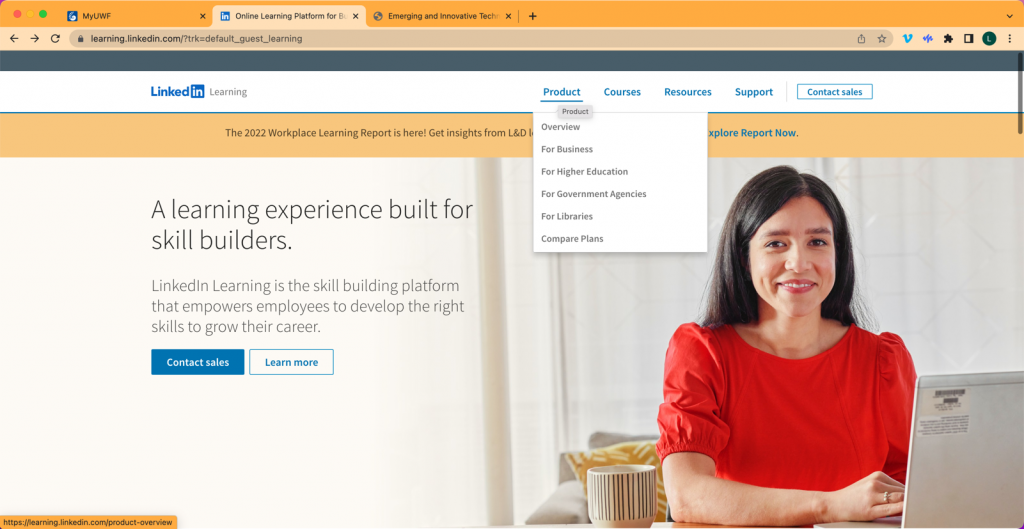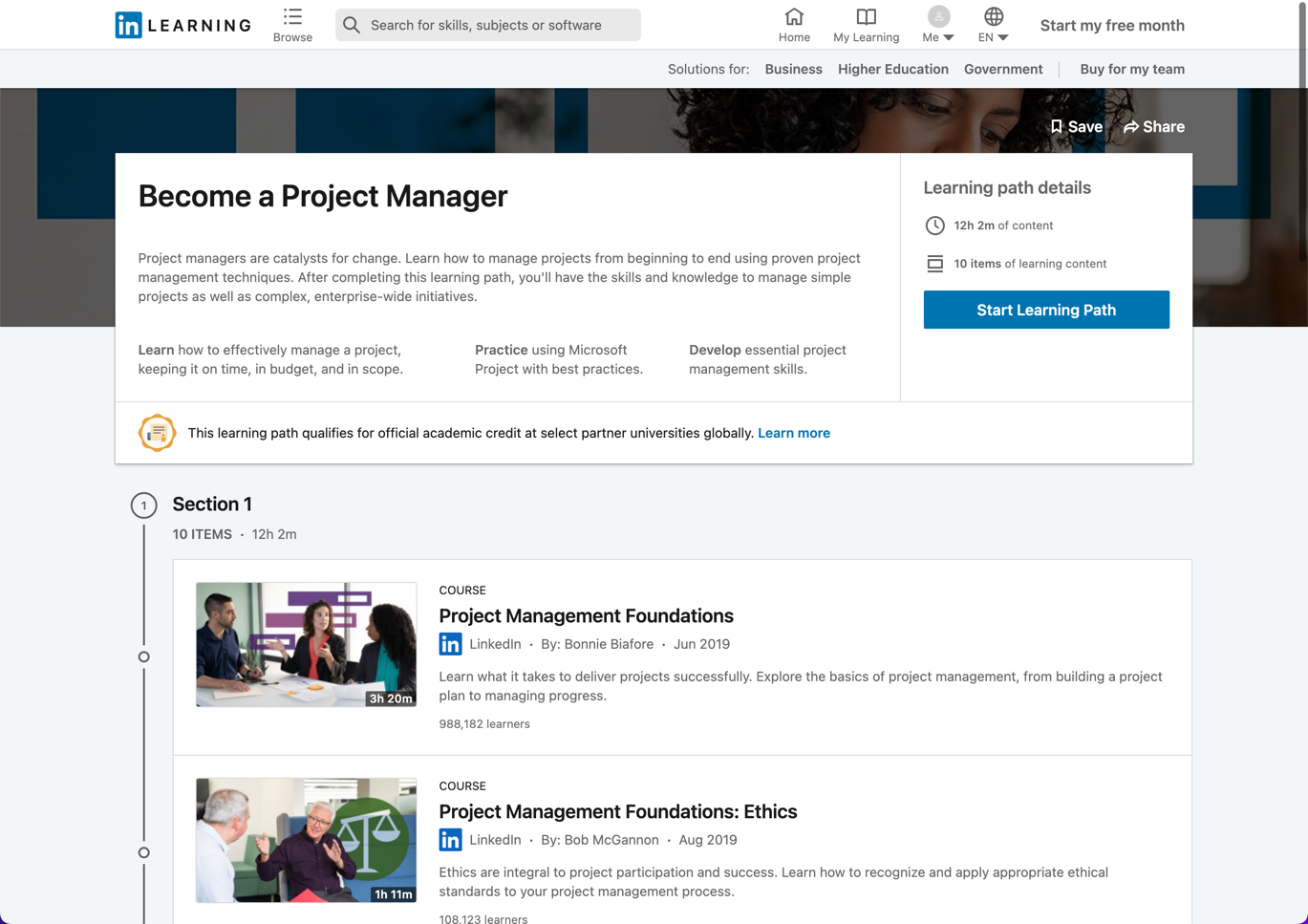On September 22, 2016, LinkedIn launched LinkedIn Learning as a partnership with Lynda.com—a resource to develop skills and talent through a personalized approach. What started out as a library of 9,000 digital courses has been expanded now to more than 20,400 courses and learning paths. The platform recommends learning experiences based on profile information bringing courses of interest to you by “using the intelligence that comes with our network (Roslansky, 2016)”. Powered by artificial intelligence capabilities, LinkedIn Learning is an online learning resource offering quality learning experiences and content led by experts in various fields of interest. It is for anyone who wants to learn a new skill, upskill, or simply learn something quickly and at their own pace. The first month is a free trial period for individuals or teams. After one month the individual plan is $19.99/month annually (paid upfront) or $39.99/month for a monthly plan. The team pricing is rated by seats 2-20 for $379.99 per seat/year. Anything more than 21 seats requires contacting LinkedIn for organization pricing.
As a learning resource and hub, LinkedIn Learning offers a wide range of topics for individuals and teams. Topics range from an assortment of business, technology and creative focused courses including time management, data analysis, and motion graphics to construction management and more. They claim more than 20,400 courses and learning paths are available and more are added weekly. The homepage displays a list of courses that are trending. A few unexpected courses are listed such as “Understanding the Impact of Deepfake Videos” and “Apple Watch Tips and Tricks”. Team offerings are for business, higher education, and government environments.
Individual Learning Resource
LinkedIn Learning is a very affordable option for adult learners seeking professional development in a convenient online and on demand format. Personally, I have used it over the years as a means to keep my skills relevant and learn something quickly. The learner has a choice to select a learning path or individual courses. Learning Paths are a little hard to find in the navigation. Search under “Browse” and the Learning Paths offered are located at the very bottom of the scrolling page. This option provides all the courses you would need to achieve a level of mastery for a particular skill in one place where you can track your progress. Some of these options claim to qualify for official academic credit at select partner universities globally. However, most of the partner universities are from other countries.
Team Resources
As previously mentioned, LinkedIn Learning offers team subscriptions for higher education, business, and government. For the purpose of this review I looked briefly at the higher education product offering. LinkedIn Learning offers specialized insights and services for colleges and universities. The highlighted benefits listed include:
- a variety of student tracking services and insights
- a growing library of collaborative content
- ability to upload proprietary videos and other content co-branded with LinkedIn Learning
- social, collaborative, and relevant experiences
- macro and micro learning
- interactive Q&A on course pages

The Future of LinkedIn Learning
The future potential for LinkedIn Learning is dependent on how well it continues to keep quality content, meet the needs for training and education, and create partnerships with online and traditional universities. It is a well-established platform for online learning and continues to grow and expand its services. The interface is intuitive and easy to use which makes exploring the courses a breeze. The use of artificial intelligence for personalization and analytics makes it a potential valuable tool for multiple environments. If the price is right, LinkedIn Learning is an appealing resource for individuals wanting to continue education or professional development. Business, higher education, and government environments could also possibly benefit from incorporating content from LinkedIn into training and educational courses. In addition, it is a social and collaborative tool that could be useful for career services and making professional connections. The format of the course offerings is appealing because of the integration of video, interactivity, and hands-on activities. Partnering with universities and colleges may also expand the relevance of the learning experiences by the inclusion of industry experts. It could be a useful addition to online university courses and a quick resource for content when time and budget may be issues.
The downside of LinkedIn Learning courses is that courses may not have the depth and the transfer of deep learning that more traditional or online courses from a university might have. In my opinion, based on my experience taking some courses in the past, these courses are great for quick tutorials. However, for the learning paths, unless you are able to apply the knowledge in a real work environment the knowledge obtained may be fleeting.
LinkedIn Learning offers free reports on different topics related to learning. I found this one of interest and wanted to share it. 2022 Workplace Learning Report
Reference
Roslansky, R. (2016, September 22). Introducing LinkedIn Learning, a Better Way to Develop Skills and Talent. LinkedIn Learning. https://www.linkedin.com/business/learning/blog/new-courses/launching-linkedin-learning
